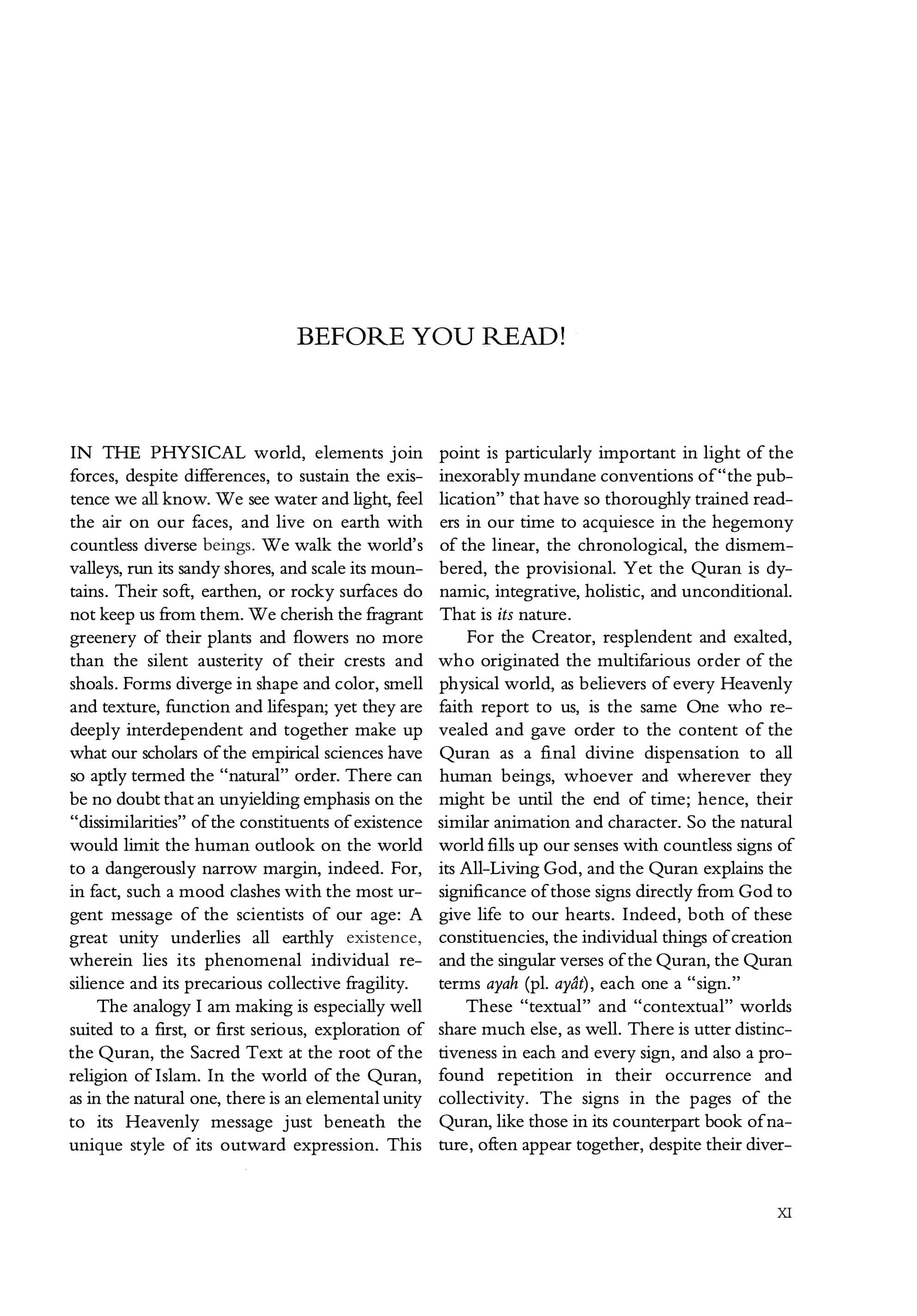Ahmed Zaki Hammad, The Gracious Quran: A Modern-Phrased Interpretation in English (2008)
Before You Read!
The analogy I am making is especially well suited to a first, or first serious, exploration of the Quran, the Sacred Text at the root ofthe religion of Islam. In the world of the Quran, as in the natural one, there is an elemental unity to its Heavenly message just beneath the unique style of its outward expression. This point is particularly important in light of the inexorably mundane conventions of “the publication” that have so thoroughly trained readers in our time to acquiesce in the hegemony of the linear, the chronological, the dismembered, the provisional. Yet the Quran is dynamic, integrative, holistic, and unconditional. That is its nature.
For the Creator, resplendent and exalted, who originated the multifarious order of the physical world, as believers of every Heavenly faith report to us, is the same One who revealed and gave order to the content of the Quran as a final divine dispensation to all human beings, whoever and wherever they might be until the end of time; hence, their similar animation and character. So the natural world fills up our senses with countless signs of its All-Living God, and the Quran explains the significance of those signs directly from God to give life to our hearts. Indeed, both of these constituencies, the individual things of creation and the singular verses of the Quran, the Quran terms ayah (pl. ayât), each one a “sign.”
These “textual” and “contextual” worlds share much else, as well. There is utter distinctiveness in each and every sign, and also a profound repetition in their occurrence and collectivity. The signs in the pages of the Quran, like those in its counterpart book of nature, often appear together, despite their diversity
